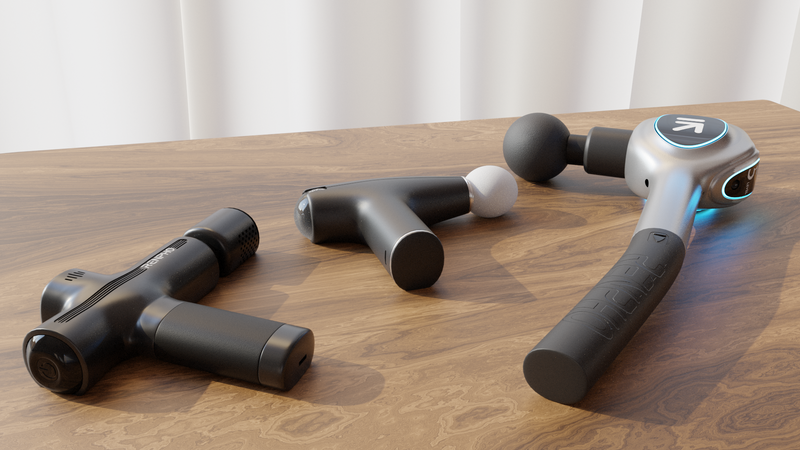In today's fast-paced and digitally driven world, many of us find ourselves spending the majority of our waking hours hunched over desks and glued to computer screens. While this modern lifestyle offers unprecedented convenience and connectivity, it also comes with a price: the rising prevalence of upper back pain among office workers. The discomfort and limitations caused by this type of pain can significantly impact our productivity, well-being, and overall quality of life.
Fortunately, there are practical steps we can take to alleviate and prevent upper back pain at work. By prioritizing ergonomics and making simple adjustments to our office setup, we can create a healthier and more comfortable working environment. In this blog, we will explore five essential ergonomic tips that can help you achieve a pain-free office experience and improve your overall posture and well-being.
So, let's dive in and discover how we can transform our workplaces into ergonomic havens that promote productivity, reduce discomfort, and support our long-term physical health.
What Is Upper Back Pain?

Upper back pain refers to discomfort or pain that occurs in the area between the base of the neck and the bottom of the rib cage, commonly known as the upper back or thoracic spine. This type of pain can vary in severity and duration, ranging from a dull ache to sharp, stabbing sensations. Upper back pain can be caused by many factors, including muscle strain, poor posture, herniated discs, osteoarthritis, and even stress. It can also be a result of underlying health conditions such as scoliosis, fibromyalgia, or thoracic outlet syndrome. Upper back pain can significantly impact a person's daily life by limiting their mobility, causing discomfort while sitting or standing, and affecting their overall quality of life. Seeking appropriate medical attention and adopting preventive measures can help manage and treat upper back pain effectively, allowing individuals to regain their mobility and alleviate their discomfort.
What Causes Upper Back Pain?
Upper back pain can be caused by a variety of factors, including trauma, improper posture, prolonged muscular strain, and certain aspects of desk work. Trauma to the upper back can result from accidents or falls, leading to strains, sprains, or even fractures. Similarly, improper posture, such as slouching or hunching over, can place excessive strain on the muscles and ligaments of the upper back, causing pain and discomfort. Prolonged muscular strain, often a result of repetitive movements or overuse, can also contribute to upper back pain.
In the context of desk work, specific factors can exacerbate upper back pain. Poor ergonomics, including an improperly positioned chair, desk, or computer monitor, can strain the neck, shoulders, and upper back. Prolonged sitting, which is characteristic of desk work, can also lead to muscular imbalances and tightness, further exacerbating upper back pain.
How Does Upper Back Pain Affect You at Work?
Upper back pain can significantly impact work productivity, affecting both physical and mental well-being. When experiencing upper back pain, individuals may find it difficult to focus on their tasks, leading to decreased efficiency and increased stress levels. The constant discomfort can distract attention, impairing concentration and contributing to errors or delays in completing work.
Why Is Ergonomics Important in the Workplace?

Ergonomics is crucial in the workplace as it ensures the safety, comfort, and productivity of employees. By applying ergonomic principles, organizations can create a work environment that promotes the well-being of employees while reducing the risk of discomfort or injury.
Implementing workplace ergonomics has several benefits. Firstly, it improves employee comfort by designing workstations and tools to fit the physical requirements of individuals. This mitigates physical strain, muscle fatigue, and discomfort, leading to enhanced job satisfaction and overall employee morale.
Secondly, ergonomics positively impacts productivity. When employees are comfortable and free from physical discomfort, they can focus better on their tasks. Ergonomically designed workstations and equipment enable optimal work posture, leading to reduced fatigue, improved concentration, and increased productivity levels for longer durations.
Moreover, ergonomic practices play a significant role in preventing discomfort and injuries associated with prolonged sitting and improper posture. By providing ergonomically adjustable chairs, proper desk height, and adequate lumbar support, organizations can eliminate or minimize the risk of musculoskeletal disorders, such as back pain, neck strain, and carpal tunnel syndrome.
5 Ergonomic Tips for Upper Back Pain

Upper back pain is a common complaint among individuals who spend prolonged hours at their workplace. Incorporating appropriate ergonomic solutions can provide relief and reduce strain on the upper back. Here are five ergonomic tips to address upper back pain at the workplace:
- Maintain proper posture: Sit upright with your back against the chair and shoulders in a relaxed position. Utilize the chair's backrest and adjust its height to support the natural curve of your spine. Avoid slouching or leaning forward, as these postures can strain the upper back muscles.
- Adjust your workstation: Ensure that your desk, chair, and computer screen are properly aligned. The desk height should allow your forearms to be parallel to the floor, while the top of the computer screen should be at eye level. This alignment helps reduce strain on the upper back muscles.
- Take regular breaks: Sitting for extended periods can place continuous stress on the upper back. Make a habit of taking short breaks every 30 minutes to move, stretch, or engage in gentle exercises. These breaks help relieve muscle tension and promote blood circulation.
- Use ergonomic accessories: Consider using ergonomic accessories, such as an adjustable chair with lumbar support or a cushioned seat pad, to provide additional comfort and relieve pressure on the upper back. Ergonomic keyboard and mouse setups can also help reduce strain on the upper back and shoulders.
- Strengthen upper back muscles: Perform stretches and exercises specifically targeting the upper back muscles. Examples include shoulder shrugs, chest stretches, and spine extensions. Strengthening these muscles improves posture and helps alleviate upper back pain.
Takeaway
The prevalence of upper back pain among office workers in today's fast-paced and digitally driven world is a significant concern. The discomfort and limitations caused by this type of pain can have a negative impact on productivity, well-being, and overall quality of life. However, there are practical steps that individuals can take to alleviate and prevent upper back pain at work.
By implementing these ergonomic tips, individuals can transform their workplaces into ergonomic havens that promote productivity, reduce discomfort, and support long-term physical health. It is essential to prioritize self-care and make conscious efforts to create a work environment that prioritizes the well-being of employees and reduces the risk of upper back pain and associated problems.
Renpho Health Tips
-

Play Hard, Stay Healthy: 5 Proven Methods to Prevent Sports Injuries
March 26, 2024
Read more >
-

Cracking the Code: Why Is Chronic Pain So Difficult to Treat?
March 26, 2024
Read more >
-

When Stress Speaks: Understanding the 6 Emotional Signs You Might Have Overlooked
March 21, 2024
Read more >
-

Massage Guns 101: A Beginner's Guide to the Ultimate Self-Care Tool
March 7, 2024
Read more >
-

The Ultimate Stress Buster: How a Shiatsu Massage Pillow Can Transform Your Health
March 5, 2024
Read more >

